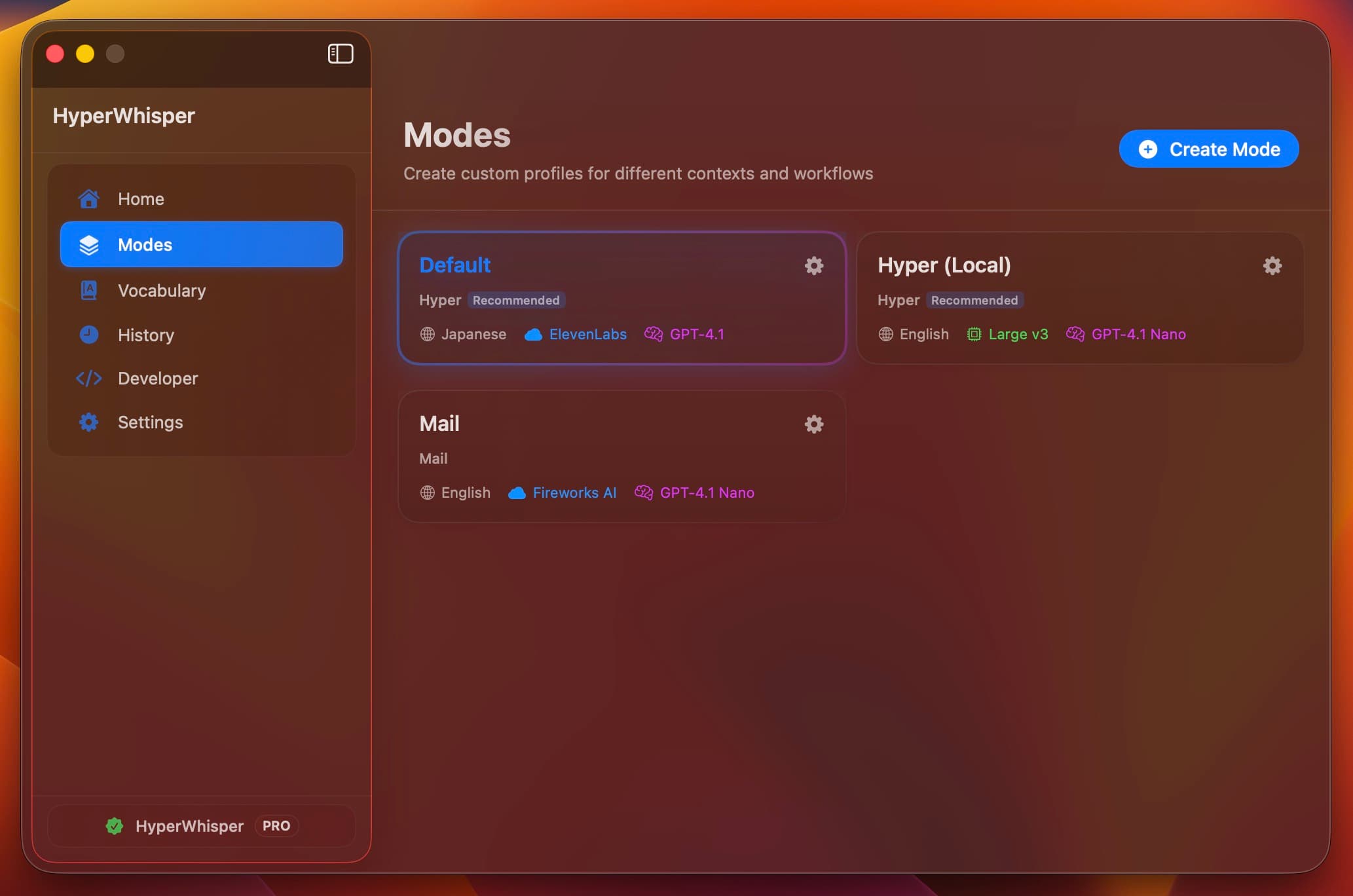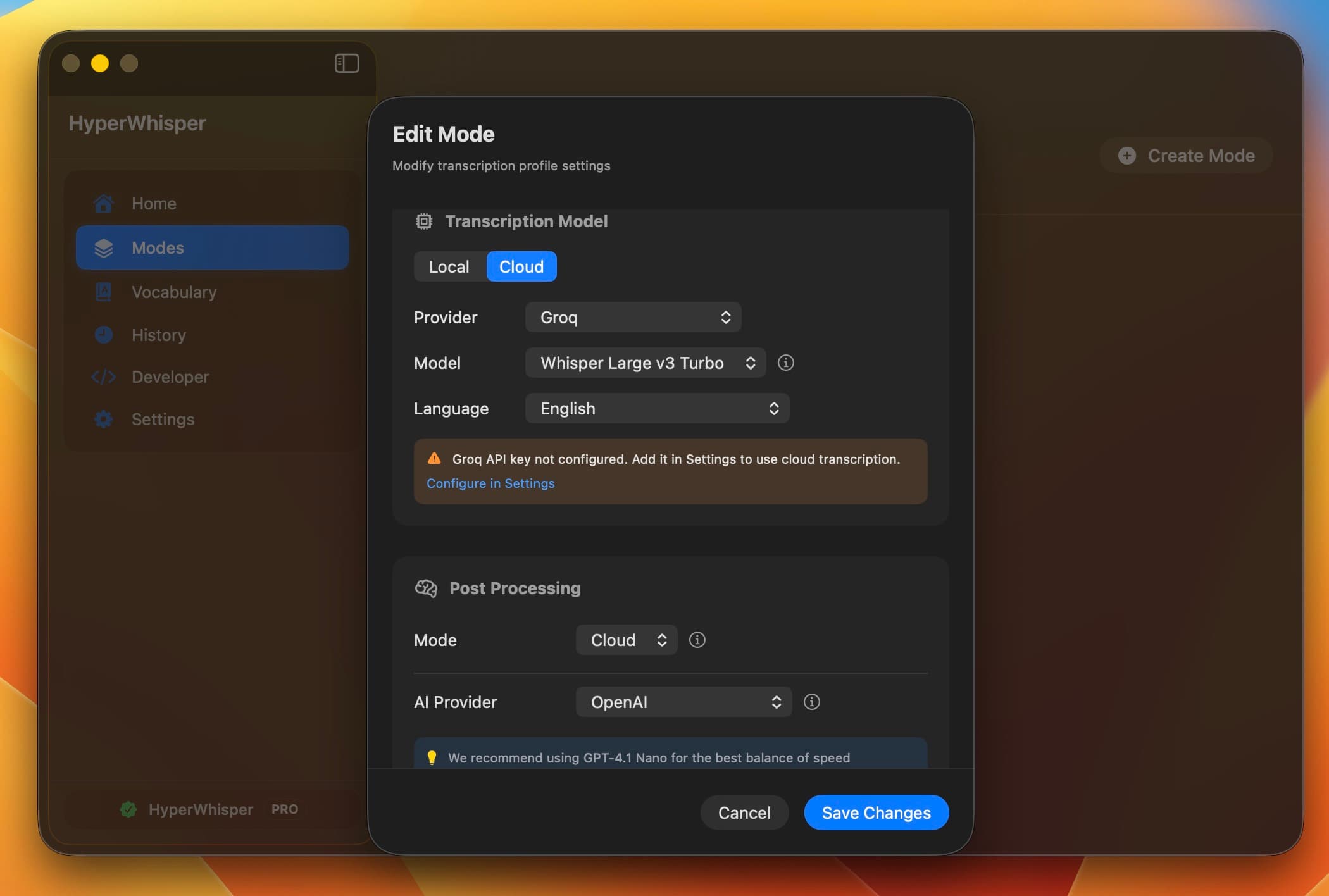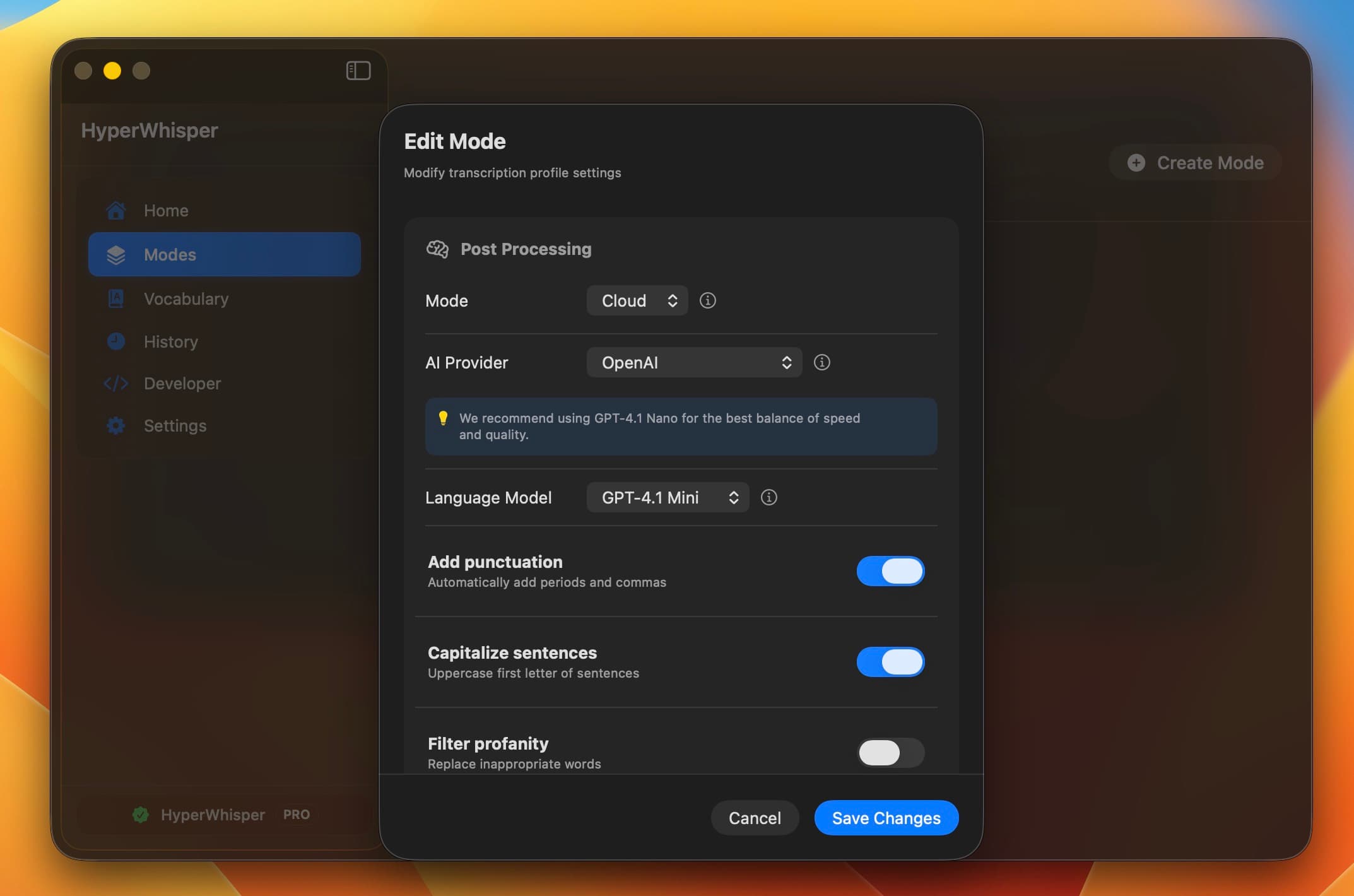Transcription Modes & Post-Processing
Modes encapsulate everything about how HyperWhisper listens, transcribes, and formats your text. Each mode stores the ASR (automatic speech recognition) model, language hints, punctuation preferences, and any AI post-processing steps. This guide walks through the options and how to keep them organized.

Presets at a Glance
Every mode starts with a preset that seeds formatting rules:
- Hyper (recommended) – balanced punctuation, vocabulary replacements, little AI rewrite.
- Voice to text – raw transcription with no post-processing.
- Message, Mail, Note, Meeting – tailored prompts for concise messages, professional emails, structured notes, or action-oriented minutes.
- Custom – bring your own instructions; great for domain-specific prompt templates.
Switching presets updates the helper text so you know exactly what changes. Choosing Custom reveals a dedicated text box for your bespoke instructions.
Language & Model Selection
- Pick a language manually or leave it on auto-detect. Some models may be English only.
- Local transcription models (eg, Whisper or Parakeet) require you to select a size. Larger sizes tend to be more accurate.
- Cloud transcription models (OpenAI’s
whisper-1, Groq, Deepgram, AssemblyAI, ElevenLabs, etc.) require you to add the corresponding API key inSettings → API Keys.

AI Post-Processing Modes
Under “Formatting” you can decide how transcripts are cleaned up:
- Off – keeps the raw Whisper output with only local punctuation rules.
- Cloud – routes through OpenAI, Anthropic, Gemini, Groq, or other OpenAI-compatible endpoints you configure.
- Local – routes throught any Gemma models you’ve downloaded locally.

When post-processing is on, you have toggles for:
- Punctuation – basic punctuation even when you skip AI post-processing.
- Capitalization – sentence case for languages that need it.
- Profanity filter – replaces explicit words in either raw or processed transcripts.
Last updated on